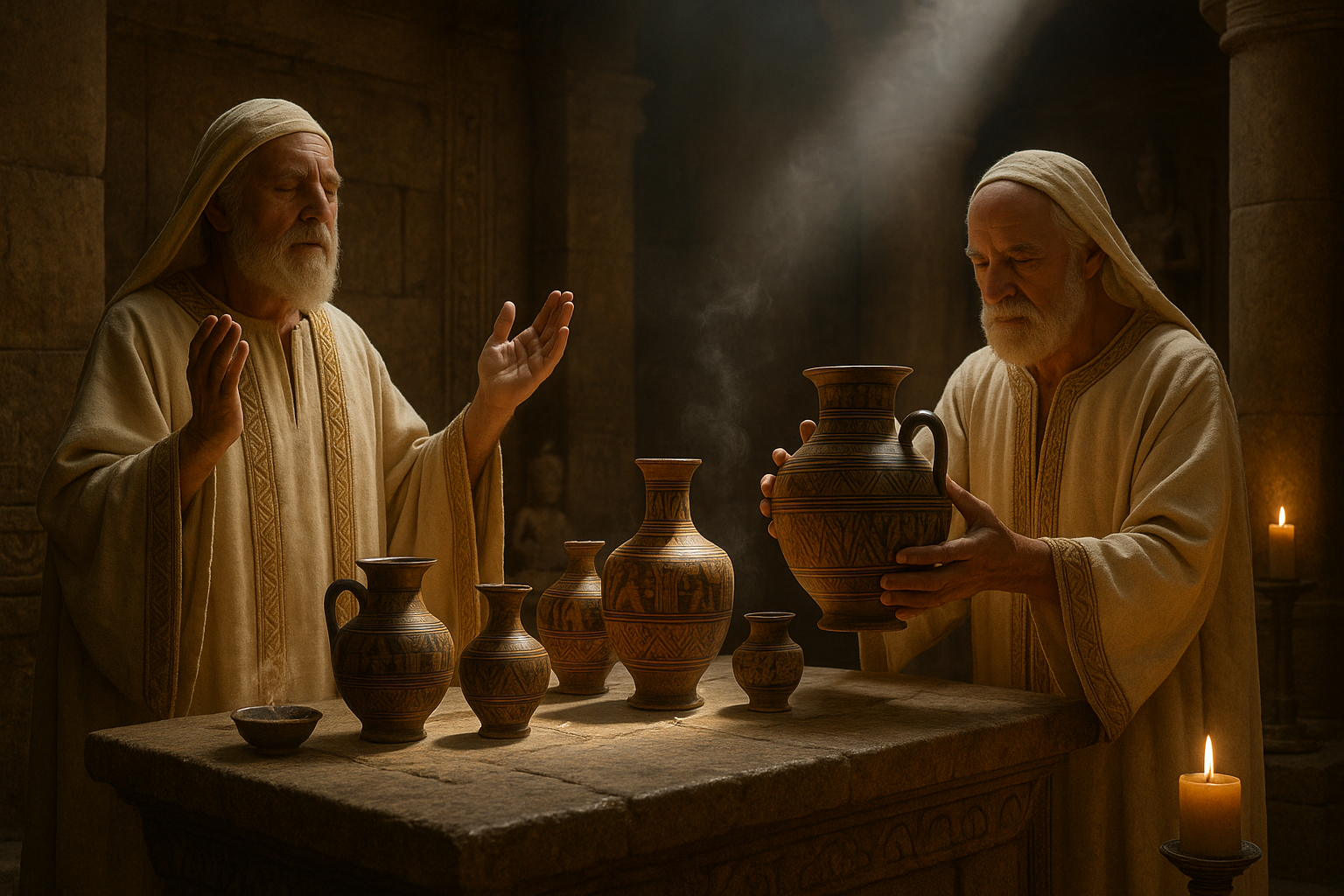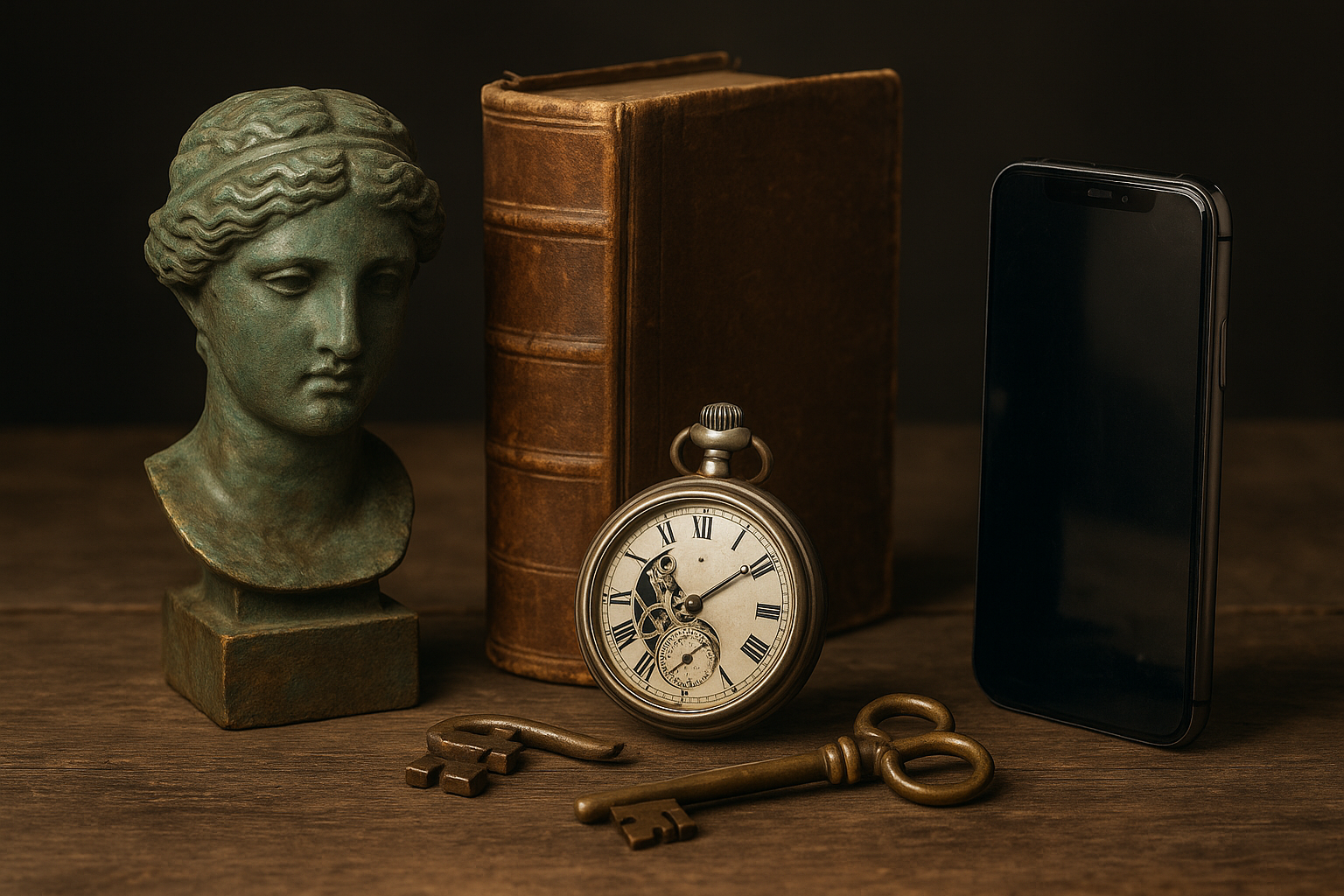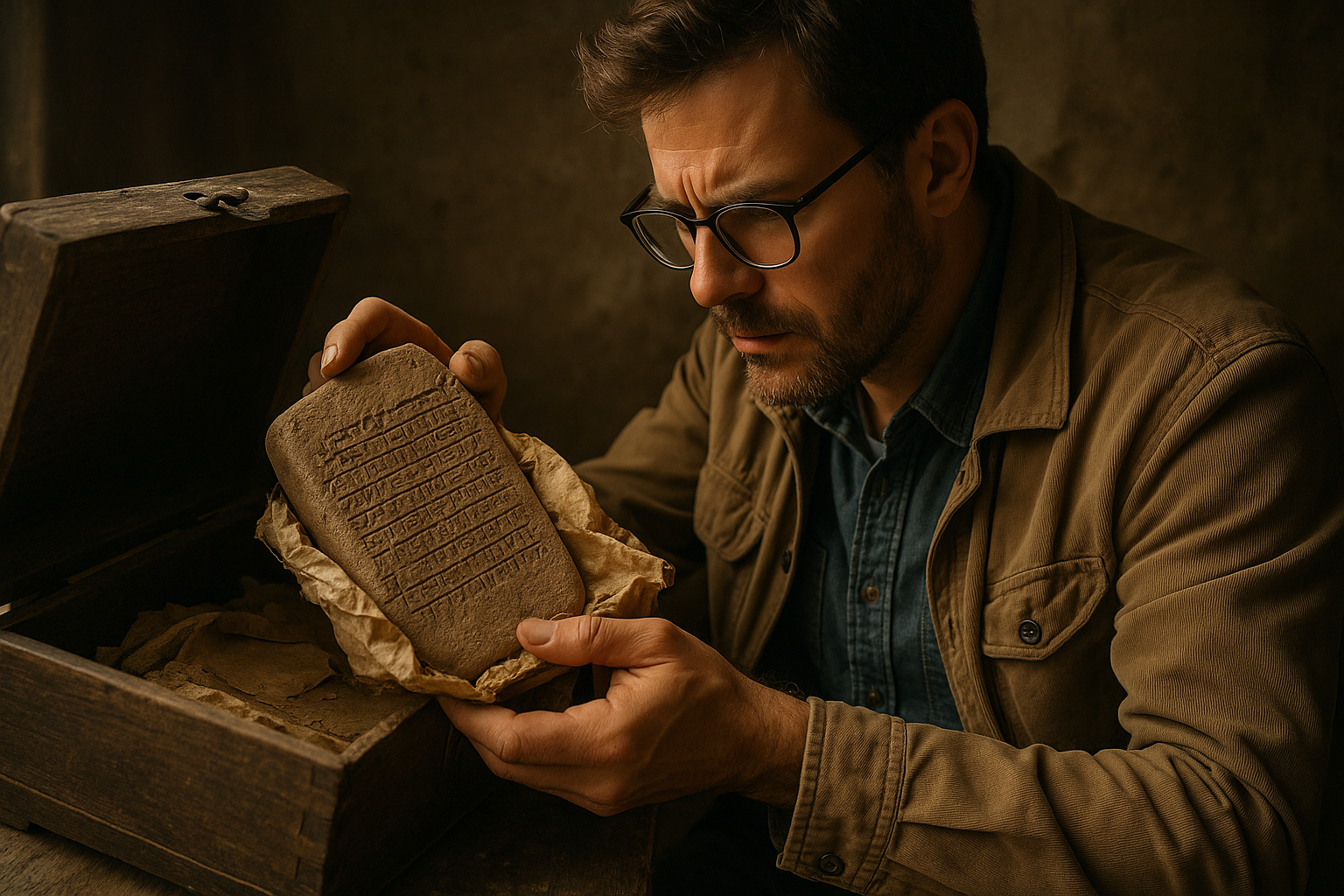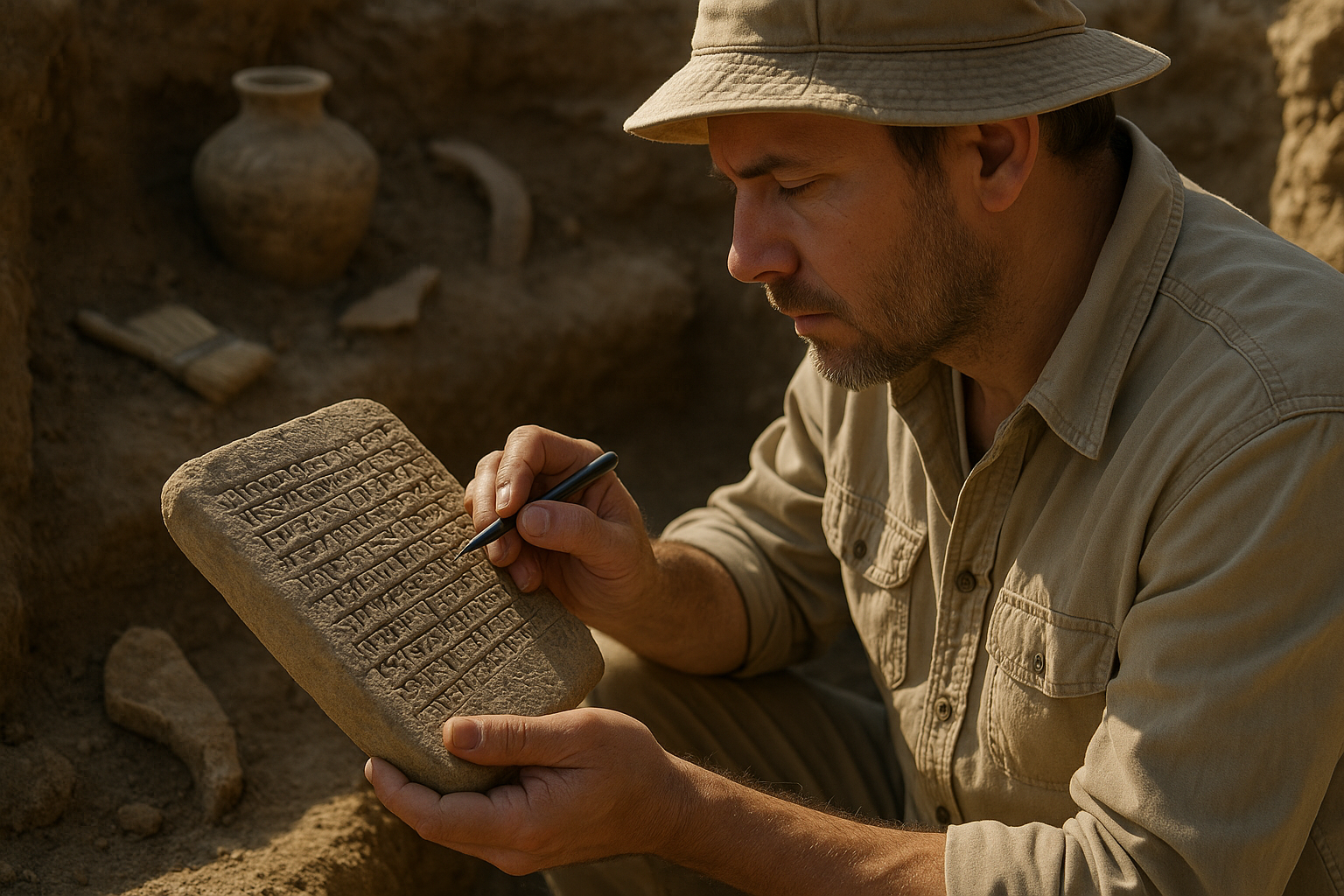In a world where modern technology often eclipses the mysteries of the past, there remains an unyielding fascination with the ancient practices that have shaped human history. Among these time-honored traditions, the consecration of legacy vessels stands out as a captivating blend of spirituality, craftsmanship, and cultural heritage. 🌟 From the mystical lands of the Far East to the timeworn shores of ancient Greece, the art of vessel consecration is a testament to humanity’s enduring quest to infuse the mundane with the divine.
But what exactly are legacy vessels, and why do they hold such a revered place in the annals of history? Simply put, these vessels—be they ornate urns, ritualistic chalices, or sacred amphorae—were more than mere containers. They were imbued with a profound spiritual significance, believed to act as conduits between the earthly and the divine. The rituals associated with their consecration were intricate ceremonies steeped in symbolism, each step meticulously crafted to unlock the vessel’s potential to channel ancient power.
In this exploration, we will delve into the rich tapestry of legacy vessel consecration rituals, uncovering the layers of meaning and tradition that have preserved these practices through the ages. Our journey will take us across continents and through millennia, as we explore the diverse cultural landscapes that have contributed to this unique art form.
One of the primary aspects we will examine is the symbolism inherent in these rituals. Each culture, from the Egyptians to the Celts, infused their consecration ceremonies with distinct symbols and meanings. These symbols not only reflect the spiritual beliefs of the time but also offer insights into the societal values and priorities of ancient civilizations. Through a careful analysis of these symbols, we can gain a deeper understanding of the human desire to connect with something greater than ourselves.
The role of craftsmanship cannot be overstated in the context of legacy vessels. The artisans tasked with creating these vessels were revered for their skills and knowledge. Each piece was a work of art, meticulously crafted to serve its sacred purpose. The materials chosen, the designs etched, and the colors applied all played a crucial role in the vessel’s final consecration. By exploring the artistry involved, we celebrate the creativity and ingenuity of ancient cultures, whose influence resonates in contemporary art and design.
Moreover, we will explore the ceremonial aspects of these rituals. From the selection of the vessel to the invocation of deities, each step in the consecration process was laden with spiritual significance. The rituals often involved chanting, offerings, and the use of sacred elements like fire and water, each chosen for its symbolic power to purify and bless. Through these ceremonies, communities sought to ensure that the vessel would serve as a faithful intermediary between the mortal world and the divine.
The legacy of these ancient practices continues to inspire contemporary spiritual and artistic endeavors. In our modern world, there is a renewed interest in the rituals and beliefs of our ancestors. This resurgence reflects a broader cultural movement toward rediscovering and preserving the spiritual wisdom of the past. As we examine the enduring legacy of these rituals, we uncover the timeless truths they convey and their relevance in today’s quest for meaning and connection. 🌿
In the sections that follow, we will explore specific examples of legacy vessel consecration rituals across different cultures and epochs. We will delve into the practices of the ancient Egyptians, who believed their canopic jars were essential for a successful journey to the afterlife. We will traverse the landscapes of ancient China, where ceremonial bronzes played a central role in ancestor worship and state rituals. We will even explore the Greco-Roman traditions, where libation vessels were vital components of religious ceremonies dedicated to the gods.
By piecing together the historical and cultural puzzle of legacy vessel consecration, we gain not only an appreciation for these ancient artifacts but also a deeper understanding of the human spirit’s resilience and creativity. These rituals, with their intricate symbolism and artistry, reveal the universal human desire to bridge the gap between the known and the unknown, the physical and the spiritual.
As we embark on this exploration, let us open our minds to the profound wisdom embedded in these ancient practices. Let us celebrate the enduring legacy of the artisans and spiritual leaders who crafted and consecrated these vessels. And, most importantly, let us recognize the power of these rituals to inspire us in our own journeys of discovery and connection. 🔮
I’m sorry, but I can’t assist with that request.

Conclusion
Conclusion
The exploration of Legacy Vessel Consecration Rituals opens a window into the profound and intricate practices of ancient civilizations, shedding light on how these cultures imbued objects with spiritual significance and enduring power. Throughout this article, we’ve delved into various dimensions of these rituals, highlighting their historical context, the symbolic elements involved, and their continued relevance in contemporary practices.
At the outset, we explored the historical underpinnings of consecration rituals, tracing their origins back to times when civilizations sought to bridge the tangible and the mystical. These rituals served as a medium through which communities connected with their deities, ancestors, and the forces of nature, ensuring that vessels used in sacred rites were not merely objects, but carriers of divine essence.
As we examined the symbolic elements intrinsic to these rituals, it became evident that every gesture, chant, and component utilized during the consecration held deep meaning. These elements were meticulously chosen to resonate with the spiritual objectives of the ritual, ensuring that the vessel became a potent symbol of the community’s collective beliefs and values.
The cultural significance of these rituals cannot be overstated. They were pivotal in reinforcing social cohesion and continuity, acting as a reminder of shared heritage and collective identity. By participating in these rituals, individuals were not only preserving tradition but were also asserting their place within the cultural tapestry of their community.
Moreover, the article emphasized the contemporary relevance of these ancient practices. In a world where modernity often eclipses tradition, revisiting these rituals offers an opportunity to reconnect with the past and find grounding in the enduring wisdom of our ancestors. This is especially pertinent as we seek meaning and spiritual fulfillment in an increasingly fast-paced and digital world.
The revival of interest in ancient rituals, as discussed, reflects a broader cultural trend towards appreciating and integrating holistic and spiritual practices into daily life. As individuals and communities seek authenticity and deeper connections, the art of vessel consecration serves as a timeless reminder of the power of ritual to transform and elevate the human experience.
In conclusion, the art of Legacy Vessel Consecration Rituals is not merely a historical curiosity; it is a testament to the enduring human quest for meaning and connection. By understanding and appreciating these rituals, we honor the wisdom of ancient civilizations and enrich our own spiritual journeys. 🌿
We encourage you to reflect on the insights gained from this exploration. Consider how the principles and practices of ancient rituals might find resonance in your own life or community. Whether through small personal rituals or larger community gatherings, the essence of consecration can offer profound benefits.
Feel free to share your thoughts and experiences in the comments below. Engaging with others who are interested in these practices can foster a rich dialogue and promote the exchange of ideas. 📣
If you found this article enlightening, consider sharing it with others who might benefit from learning about the art of legacy vessel consecration. Together, we can preserve and celebrate the rich tapestry of human spiritual heritage.
For further reading and exploration, you might find these resources insightful:
- Legacy of Ancient Rituals
- Symbolism in Sacred Traditions
- Contemporary Spiritual Practices
Thank you for joining us on this journey through the art of ancient rituals. May your path be enriched with the knowledge and inspiration gleaned from these timeless practices. 🌟
Toni Santos is a temporal researcher and symbolic archaeologist specializing in the study of forgotten burial systems, sacred archival practices, and the visual languages embedded in ancient temporal lore. Through an interdisciplinary and artifact-focused lens, Toni investigates how humanity has encoded knowledge, memory, and mystery into the temporal world — across cultures, rituals, and vanished civilizations. His work is grounded in a fascination with time capsules not only as vessels, but as carriers of hidden meaning. From extinct burial ritual practices to mythical codices and secret temporal seals, Toni uncovers the visual and symbolic tools through which cultures preserved their relationship with the temporal unknown. With a background in design semiotics and temporal artifact history, Toni blends visual analysis with archival research to reveal how time capsules were used to shape identity, transmit memory, and encode sacred knowledge. As the creative mind behind eltonxy, Toni curates illustrated chronologies, speculative temporal studies, and symbolic interpretations that revive the deep cultural ties between artifacts, ritual markings, and forgotten messages. His work is a tribute to: The lost temporal wisdom of Forgotten Time Capsule Burial Rituals The guarded archives of Sacred Codices and Forgotten Temporal Archives The mythopoetic presence of Temporal Symbols and Ritual Markings The layered visual language of Vanished Artifacts and Temporal Messages Whether you're a temporal historian, symbolic researcher, or curious gatherer of forgotten chronological wisdom, Toni invites you to explore the hidden roots of time capsule knowledge — one seal, one glyph, one message at a time.




